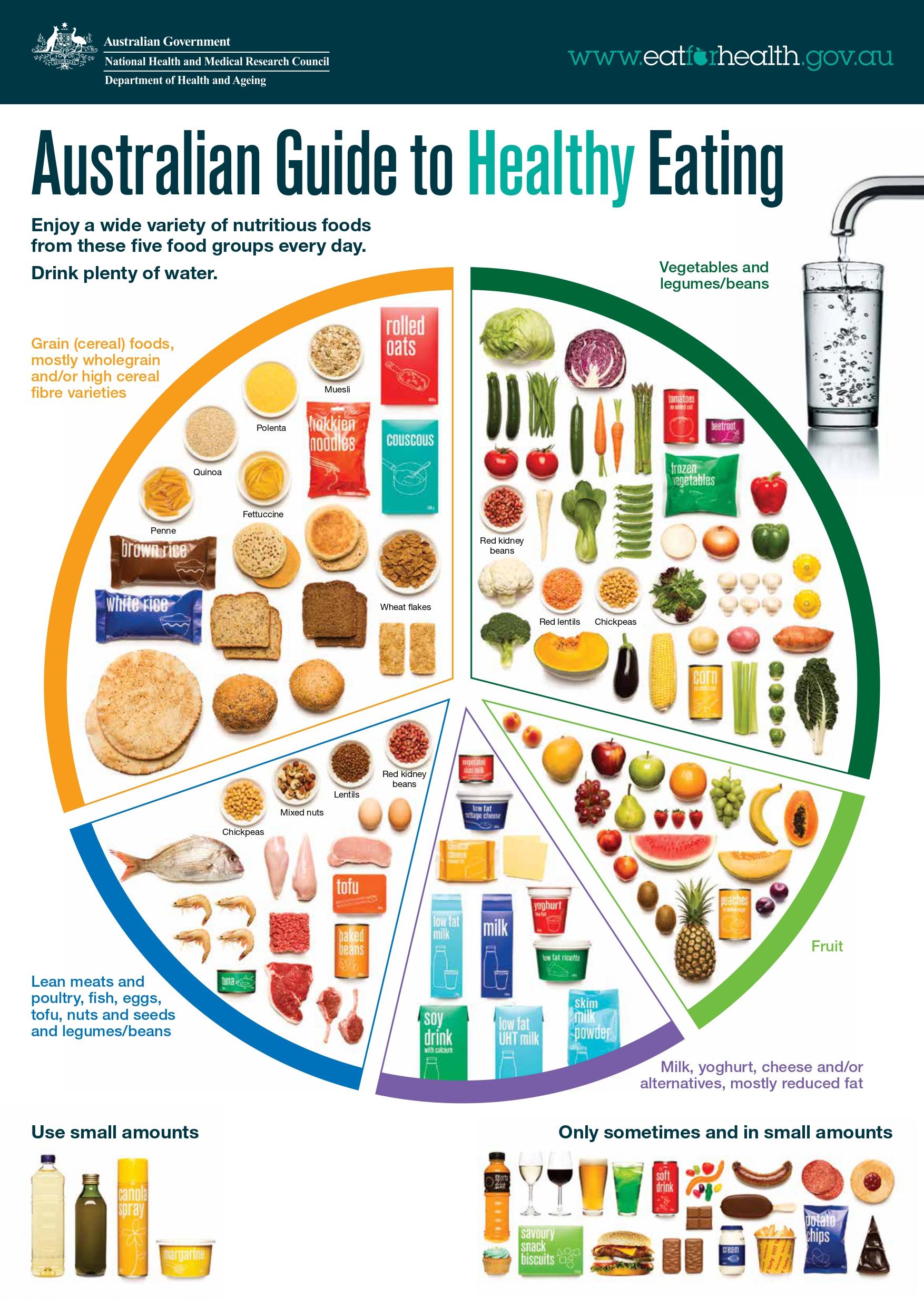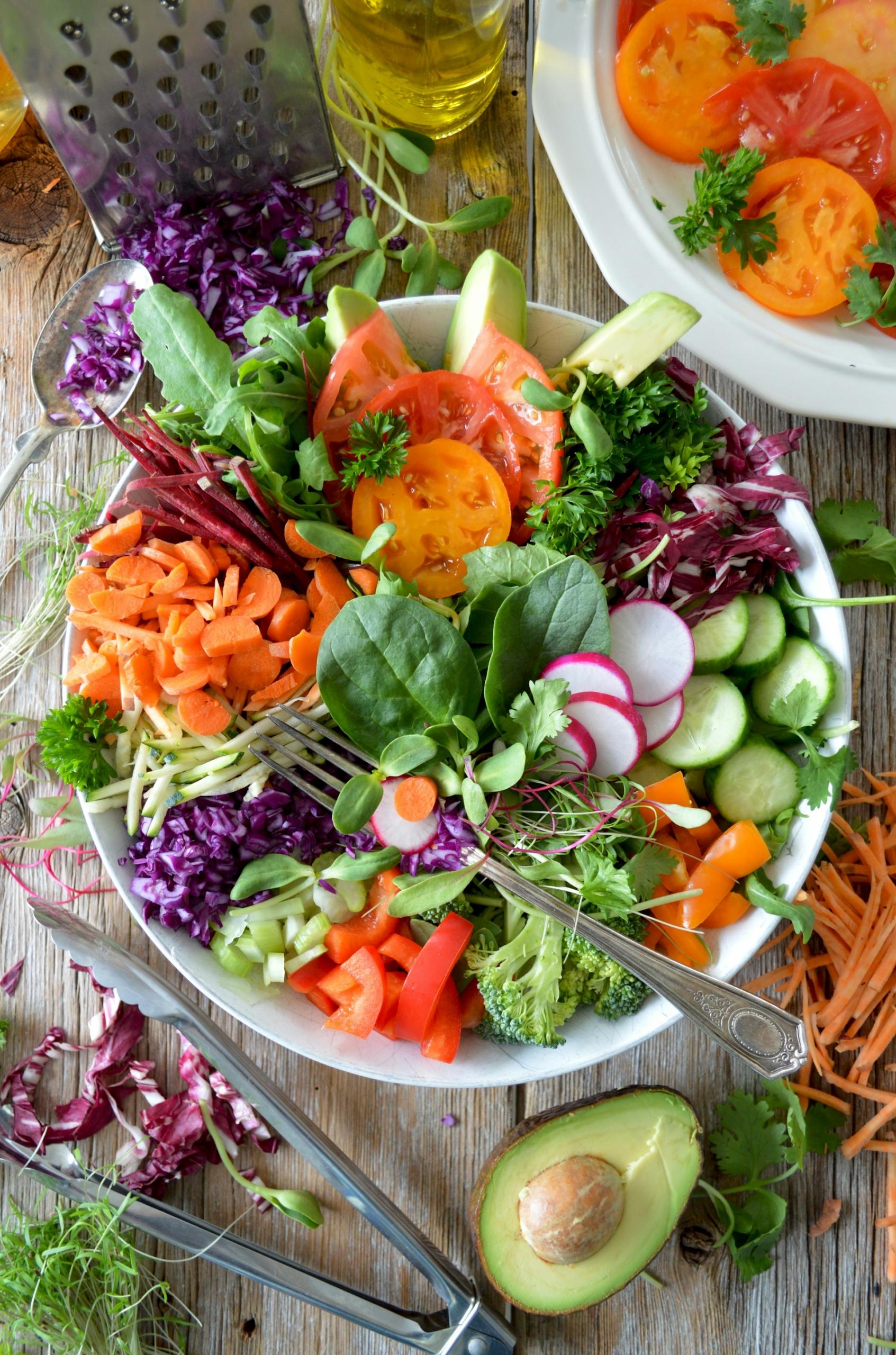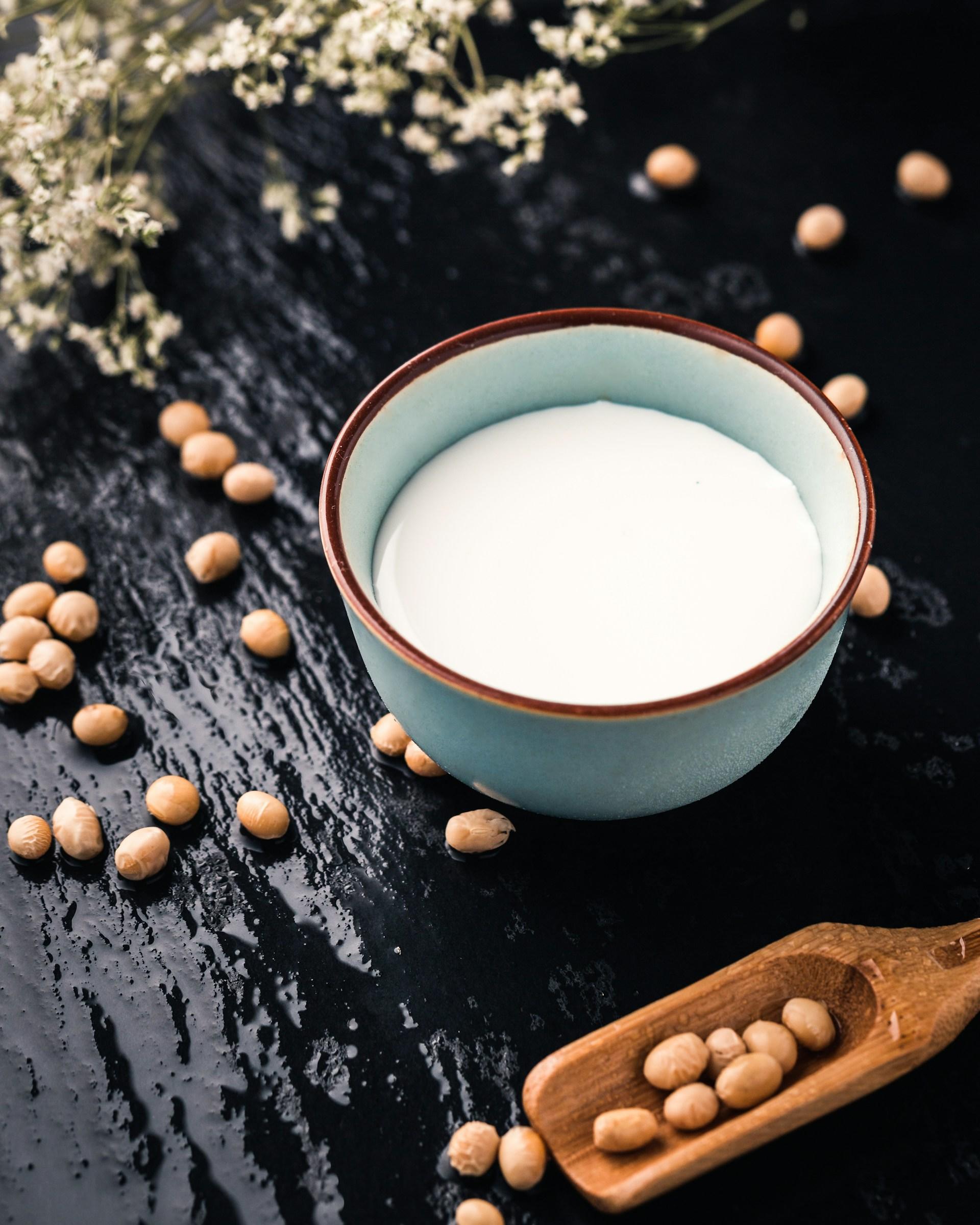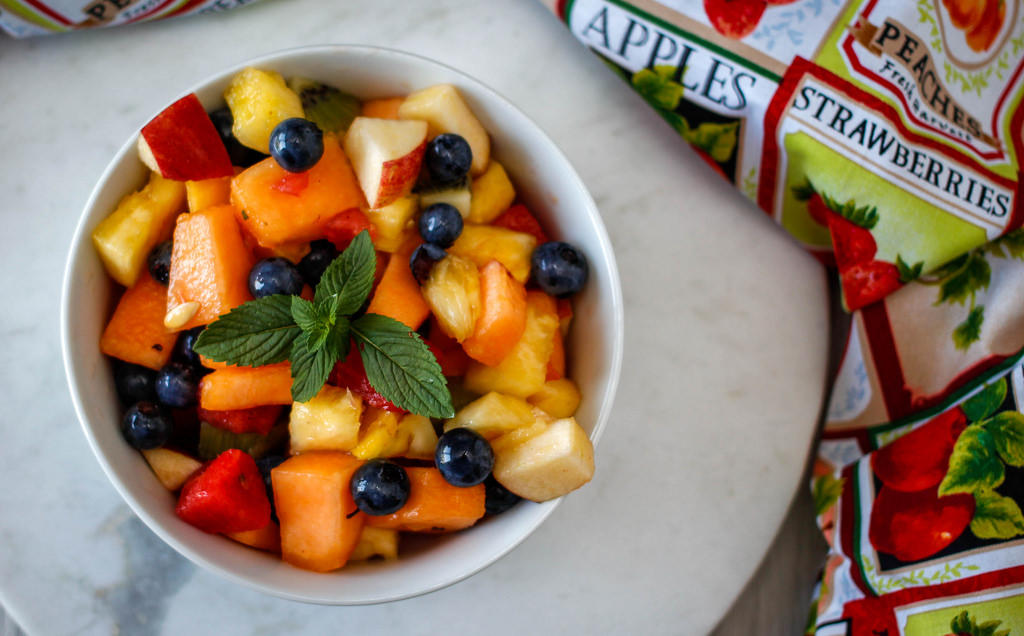Let food be thy medicine and medicine be thy food.
Hippocrates
There is a lot of information out there about nutrition: what we should eat, when we should eat it, and what we should avoid.
But the wealth of information, especially that found online, is often confusing. We are constantly bombarded with the latest fad diet or superfood, and the nutrition our bodies need seems to change with the latest trend. With so many choices on supermarket shelves and online shops today, it is sometimes easy to forget the basics of nutrition.
What are the staple nutrients? How much should we eat? Should we buy into the latest superfood? What are the different food groups? In this article, we’ll go back to the basics of nutrition, covering the well-known facts about what nutrients we need and how to get them.

Advice from the Government
To provide some basic information and help answer these questions we can begin with simple government advice.
The Australian National Health and Medical Research Council lays out the five food groups that when consumed in the right quantities, mean our bodies will gain the right variety of nutrients.
The Australian Guide to Healthy Eating is a handy and helpful infographic to refer to for simple and straightforward nutrition advice.
You may be familiar with older guidelines, which typically broke down foods into their macronutrient profiles, so the five food groups were fruits, vegetables, carbohydrates, proteins, and fats. Nutrition information (especially from governments) has changed in a lot of ways over the years.
According to the current Guide, updated in 2013, there are 5 major food groups:
- Grains
- Vegetables and Legumes/Beans
- Proteins
- Dairy & Dairy Alternatives
- Fruit
The chart also shows how much each food group should be in your complete diet.
Also note that oils, alcohol, highly processed foods, cured meats, and simple sugars can be part of a healthy diet when taken in moderation!

Another great resource to look at is the familiar Healthy Eating Pyramid, which was first developed in 1980. In 2015, it was revised and reorganised to put more emphasis on fruits and vegetables and recommend fewer grains.
The pyramid uses the same five food groups while recognising that a small amount of healthy fats are also part of a healthy diet.

Nutrition is a Complex Subject
While these guides serve as a great intro to nutrition, it’s important to take them with a grain of salt. Nutrition is a dense, convoluted subject with new data emerging all the time, so reducing it to a simple graph means that much of the nuanced information simply cannot be conveyed.
Also, it’s important to note that each body is different. Depending on your specific genetics, lifestyle, possible conditions or diseases, and other factors, your diet may need to be tweaked to suit you best, even if that means not following the official advice.
It’s always a good idea to talk to a doctor and/or a professional, qualified dietician (not the same as a nutritionist!) to ensure that your diet is healthy for your body!
1. Vegetables & Legumes/Beans
The newest guidelines emphasise the need for this food group the most. Previously, grains were thought to be the food group that should be consumed the most, however, while grains are important, they lack many of the vitamins and minerals that are found in vegetables, legumes, and beans.
The general advice is to consume two serves of fruit and five serves of vegetables per day, but the more you eat, especially in place of unhealthy sugary or salty snacks, the better your overall, general health will be. This food group contains the most diverse source of vitamins and minerals, and sticking to a diet rich in fruit and vegetables will help the body thrive. Fruits and vegetables also keep the immune system strong, helping to protect the body from illness and disease.
“Vegetables” is a culinary term, not a botanical one. This means that technically, there are no vegetables! Instead, we have classified certain foods as vegetables because of how they look, taste, and are typically prepared. Grouping them this way also means they often have similar nutrients, like fibre, vitamins C, D, K, and the suite of B vitamins (excluding B12), iron, magnesium, and other minerals. It's convenient from a nutrition perspective!
Grouping vegetables with legumes and beans means that this food group focuses on
- Plant foods
- Vitamins & Minerals
- Complex carbohydrates
- Fibre
- Protein
- Antioxidants
- Water

2. Grains
Grains are where we get the majority of our carbohydrates from. Carbohydrates are essential in helping our bodies to function and release energy efficiently.
Nutrition Australia recommends you “choose mostly wholegrains (such as brown rice, oats and barley), and wholemeal/wholegrain/high cereal/fibre varieties of bread, pasta, crisp breads and cereal foods” and avoid highly processed and refined options as much as possible.
Reinded grains include white bread, white rice and pasta; anything that doesn’t contain all three of the parts of a grain (the bran, the germ, and the endosperm) in the correct, natural proportions are refined. Refined grains typically contain more simple carbs than complex carbs, which can cause spikes in blood sugar.
Carbohydrates are necessary for our bodies to create and store energy for things like movement, digestion, respiration, and thinking. Too many carbs (like anything else) can have harmful effects, but avoiding carbs altogether can also be harmful. Even if you can’t get your carbs from grains, there are many other foods that contain carbohydrates. Also be aware that complex carbs are typically better for the body than simple carbs.
Unrefined grains are healthier because they tend to be less processed (meaning they typically have fewer additives) and contain all the essential parts of the original grain, which means you get more vitamins and nutrients, and your blood sugar doesn’t change rapidly.
This food group focuses on
- Fibre
- Vitamins & Minerals
- Complex carbohydrates
- Plant foods
- Providing more healthy calories
- Satiation

Pasta belongs to the grain food group, as it is typically made from wheat or other grains like rice or corn. It provides carbohydrates, which are a primary source of energy.

3. Proteins
Protein is the macronutrient that people typically think about the most. The traditional recommended sources of protein were very limited: meat, fish, chicken.
But now, it’s recognised that too much meat of any kind can have a negative effect on health. Fortunately, there are many more ways than just meat to get enough protein! Even dairy products have lots of protein (more on that in the next section)!
Additionally, you should be aware that highly processed, cured meats like pepperoni, salami, hot dogs, sausage, deli meats, jerky, and bacon, may be linked to an increased risk of cancer, so be sure to limit your consumption of these items.
Alternatively, as research has developed in the last 10 years outlining the dangers of consuming too much meat and fish, there are huge health benefits to eating plant-based sources of protein, which may prevent serious illnesses, such as heart disease and stroke.
Protein is often misunderstood, so here are some facts to help you know it better!
The average adult only needs about 0.8g/kg of body weight of protein per day (eg: an 80kg person needs about 64g per day).
Most people get enough protein in their diets without trying, however, people with dietary restrictions may need to monitor their intake.
All proteins are broken down during digestion, so don’t focus on “complete” and “incomplete” sources, and instead eat a variety of proteins to obtain all the required amino acids.
The egg industry has also been warned against using the word ‘healthy’ or ‘nutritious’ when advertising in recent years and this is due to the high cholesterol content found in them (though they are full of protein).
Therefore, many nutritionists are stressing that it’s important to consume at least part of your protein from plant sources for a healthier diet.
Wondering what to eat to get the protein you need? Here’s a simple breakdown of the most common plant and animal sources of protein.
Recommended Animal Sources of Protein
lean beef, lean pork, other lean meats, fish, poultry, eggs, dairy
Recommended Plant Sources of Protein
Nuts, seeds, pulses (chickpeas/garbanzo beans, kidney beans, peas, etc), soy (tofu, tempeh, edamame, soy beverage, etc), lentils, quinoa, amaranth, seitan (vital wheat gluten), leafy vegetables (spinach, broccoli, brussels sprouts, asparagus, artichokes, avocado, etc), wholegrains
This food group focuses on
- Protein
- Healthy Fats (meats and some plant sources)
- Trace minerals
- Vitamins (mostly from plant-based sources)
- Vitamin B12 (solely from animal-based sources)

Vitamin B12 comes from a bacteria found in soil. Since we typically no longer eat dirt along with our veggies, and our soil is mostly depleted of the vitamin anyway, the vast majority of B12 in our food system is supplemented. Animals and their products are given supplementation and fortification, which is why it’s found in these items. If you don’t eat meat or other animal products, simply be sure to eat things like fortified foods, nutritional yeast, and/or a B12 supplement.
4. Dairy & Dairy Alternatives
This section of the pyramid and pie chart is present to encourage another avenue for the intake of vitamins and minerals, ensuring a complete intake of all the vital nutrients that come from a well-rounded diet.
The original reason for having dairy as a separate food group stems from the dairy industry, which has lobbied to be included on nutritional guidelines for many years in many countries. Now, it’s such a normal part of our day that it seems unnatural to have a dietary guide that doesn’t mention it.
However, recent research has found that although dairy products contain lots of calcium, they can also contain high amounts of saturated fat. Many people are also allergic or intolerant to dairy. Consuming large quantities of dairy-based foods including milk, cheese and yoghurt can be harmful to our bodies and overall health in the long term. For these reasons, the dairy section of the pyramid has been expanded to include non-dairy alternatives that are similar in nutrients.
For many, many years, people in the West have been advised that milk is the best and only way to get enough calcium in our diets. However, that’s simply not true. Calcium is found in many vegetables and leafy greens in high amounts. That’s why adult mammals and other non-milk-drinking animals who eat plants aren’t calcium deficient! (Carnivores get calcium from eating bones.)
Foods such as soy or nut-based beverages, seeds, beans and pulses, as well as vegetables like spinach, kale and okra, all contain enough calcium to avoid dairy altogether.
So whether you go the dairy or non-dairy route, as long as you are certain to consume a variety of sources of calcium and other nutrients, you can expect to be meeting your daily nutritional requirements!
This food group focuses on
- Calcium
- Other vitamins and minerals
- Protein
- Healthy fats
- Water

5. Fruit
Does it surprise you that fruits are recommended as the smallest part of the pie chart?
This is because although fruits are a great source of vitamins, minerals, fibre, and water, they also contain a lot of natural sugars and have very few calories. Natural sugar is healthy and necessary in a well-rounded diet, but too much of it can pose issues with blood sugar spiking.
Fruits are a much healthier alternative to things like candies and chocolates, but they don’t provide very many macronutrients, making them less important than the other food groups.
Fruits are a great way to get lots of vitamins and minerals into your diet without lots of fat and calories. Although fruits typically have a lot of natural sugar, they are still a healthy choice, especially if you eat them instead of sweets like sugary chocolate and candies!
This food group focuses on
- Vitamins & minerals
- Fibre
- Water
A Word on Fats and Salt
Fats used to be considered a separate food group in some instances, but because it’s so easy to find fats in your average diet, there is no reason for it to be in its own category.
Fat is essential for a healthy body, but you can find healthy fat in things like lean meats, dairy and butter, eggs, nuts, and seeds. Not to mention that many things are cooked in oil or contain oil!
So, while it’s important to eat healthy fats, you probably won’t have a hard time finding them!
Salt is similar; too little of it can be life-threatening. But thankfully, many dishes contain salt for flavour and many pre-made foods already contain plenty. So, while you should avoid eating too much salt, you also don’t typically need to go out of your way to make sure you’re getting it!
Typically, “Good Fats” are unsaturated fats, like those found in avocados, olive oil, oily fish, flaxseeds, and some other nuts and seeds. They help the body perform vital processes. “Bad Fats” are typically saturated fats and trans fats, which can contribute to increased cholesterol and heart disease. These are typically found in highly processed foods, fatty meats, dairy, and eggs.
Nutrition is an expansive, complicated subject. Knowing the basics can help you make good dietary choices, but sometimes you might need or want to know more! In that case, you can find amazing nutrition tutors on Superprof who can help you understand how nutrition works and/or help you build the perfect diet for your body and lifestyle.





















